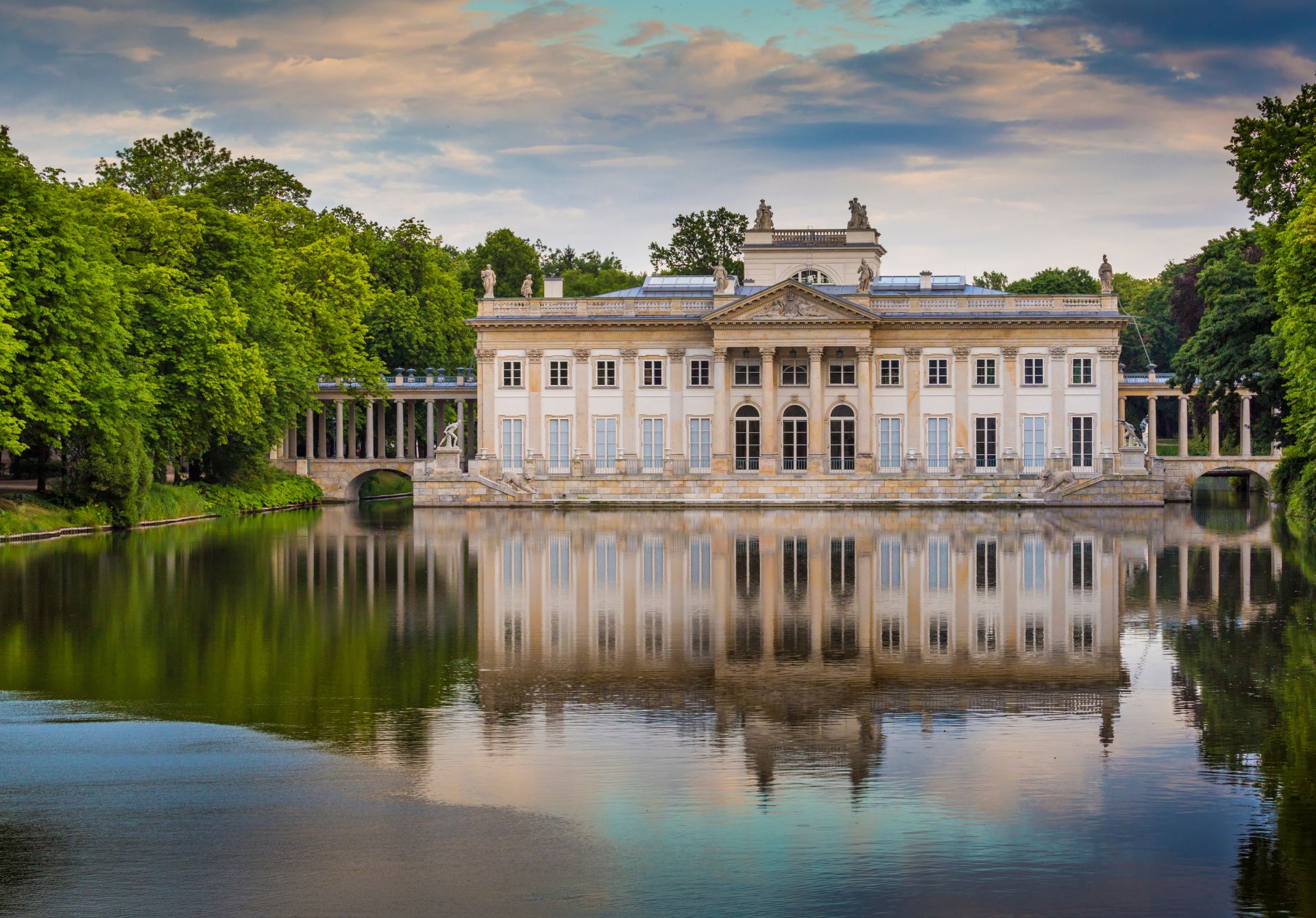Nestled in the heart of Warsaw, Poland’s capital city, Łazienki Park stands as a testament to the harmonious blend of nature, history, and culture. This sprawling green oasis, covering an impressive 76 hectares, has been captivating visitors for centuries with its picturesque landscapes, architectural marvels, and rich historical significance.
A Historical Journey Through Time
Łazienki Park’s history dates back to the 17th century when it was originally designed as a baths park for a Polish nobleman. However, it was under the patronage of King Stanisław August Poniatowski in the 18th century that the park truly flourished. The king transformed the area into a magnificent summer residence, adding numerous classical-style buildings and gardens that continue to enchant visitors to this day.
During World War II, the park suffered significant damage but was meticulously restored in the post-war period. Today, it stands as a living museum, offering glimpses into Poland’s rich cultural heritage and architectural prowess.
Architectural Marvels Within the Park
Łazienki Park is home to several architectural gems that showcase various styles and historical periods:
1. Palace on the Isle: Often referred to as the park’s crown jewel, this neoclassical palace sits majestically on an artificial island. Originally built as a bathhouse, it was later converted into a royal residence. Its stunning façade and opulent interiors make it a must-visit attraction.
2. Amphitheater: Inspired by ancient Greek and Roman open-air theaters, this unique structure features a stage on an island, with the audience seated across the water. It continues to host performances during summer months, creating a magical atmosphere for cultural events.
3. Myślewicki Palace: This charming rococo-style palace served as a guest house for visiting dignitaries. Its intimate scale and elegant decorations offer a contrast to the grandeur of the Palace on the Isle.
4. Old Orangery: Housing a collection of sculptures and serving as a winter garden, this building is a prime example of classical architecture. Its long façade and grand ballroom are particularly noteworthy.
Natural Beauty and Landscaping
While the architectural elements of Łazienki Park are impressive, its natural beauty is equally captivating. The park’s landscape design follows the English garden style, characterized by its seemingly natural, yet carefully planned layout.
Visitors can explore:
– Lush gardens with a diverse array of plant species – Tranquil ponds and streams that add to the park’s serene atmosphere – Ancient trees, some of which are over 200 years old – Carefully manicured lawns and flower beds that change with the seasons
The park is also home to various wildlife, including red squirrels, peacocks, and numerous bird species, making it a haven for nature enthusiasts and photographers alike.
Cultural Significance and Modern-Day Attractions
Łazienki Park is not just a historical site; it continues to play a vital role in Warsaw’s cultural landscape. Some notable features include:
1. Chopin Monument: This iconic bronze statue of the famous Polish composer Frédéric Chopin sits under a weeping willow tree. During summer months, free piano concerts are held here every Sunday, attracting music lovers from around the world.
2. Museums and Galleries: Several buildings within the park house museums and art collections, offering insights into Polish history, art, and culture.
3. Educational Programs: The park regularly hosts educational initiatives, including guided tours, workshops, and lectures on topics ranging from history to ecology.
4. Seasonal Events: Throughout the year, Łazienki Park comes alive with various events, including music festivals, art exhibitions, and holiday celebrations, making it a dynamic space for community engagement.
Conservation Efforts and Sustainability
In recent years, there has been a growing focus on preserving Łazienki Park for future generations. Conservation efforts include:
– Restoration of historical buildings and monuments – Implementation of sustainable gardening practices – Installation of environmentally friendly lighting systems – Development of educational programs to raise awareness about the park’s ecological importance
These initiatives ensure that Łazienki Park remains not only a historical treasure but also a model for sustainable urban green spaces in the 21st century.
Łazienki Park stands as a testament to Warsaw’s rich history, cultural heritage, and natural beauty. Its seamless blend of architectural marvels, lush landscapes, and vibrant cultural offerings make it a must-visit destination for tourists and a beloved retreat for locals. As we look to the future, the ongoing conservation efforts and sustainable practices ensure that this green oasis will continue to inspire, educate, and enchant visitors for generations to come. Whether you’re seeking a peaceful escape from urban life, a dive into Polish history, or a cultural experience, Łazienki Park offers something truly special for everyone who walks its paths.

